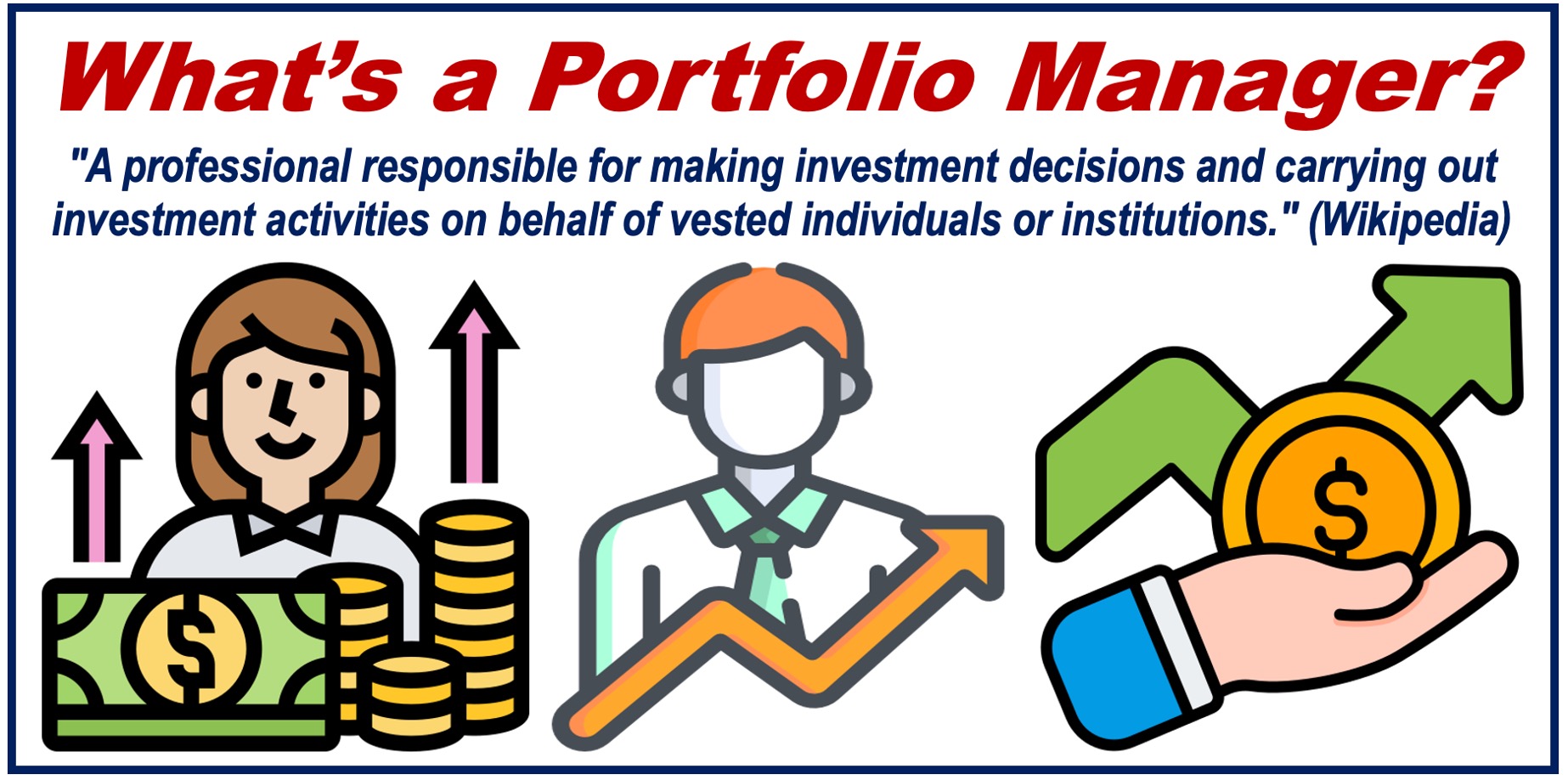What is a portfolio manager?
A Portfolio Manager is either somebody who makes investment decisions using other people’s money or an individual in charge of a financial institution’s asset and liability portfolios.
The term ‘portfolio manager’ can refer either to an individual or a firm that manages investment portfolios. They work on behalf of private clients, foundations, endowments, or pensions. The aim is to maximize the portfolio’s expected return and minimize risk.
As global markets become increasingly interconnected, portfolio managers are expanding their focus to include international investments, diversifying across various countries and asset classes to optimize returns and mitigate risk.
A portfolio is a spread of investment products that a person, corporation, hedge fund, or financial institution owns.
The portfolio manager typically works alongside researchers and investment analysts and is ultimately responsible for establishing an investment strategy.
Recent trends show an increasing reliance on sophisticated algorithms and artificial intelligence to inform investment strategies, allowing portfolio managers to process vast amounts of data for more accurate forecasting and decision-making.
Portfolio managers also choose the right investments and decide how much money to spend on each one.
If you have a managed account, it means that an investment manager or portfolio manager makes your investment decisions for you. In other words, he or she manages or oversees your account.

Portfolio manager selects investments
Investment banks send their analysts to present investment ideas to portfolio managers. They sift through the relevant data and decide which securities to buy and sell.
It is a full-time job, during which the portfolio manager talks to company executives, monitors industry and economic trends, and seeks out the right company and time to invest the portfolio’s resources.
The portfolio manager makes decisions regarding the investment mix and policy. He or she also balances risk against expected returns. Whether he or she buys riskier or safer investments depends on the client’s risk tolerance.
A client who is willing to accept a high level of risk can expect greater returns. However, there is also a greater risk of large losses.
In the world of mutual and exchange-traded funds (ETFs), there are two types of portfolio management: 1. passive and, 2. active.
A passive manager just tracks a market index. An active manager, on the other hand, tries to beat the market return by engaging actively.
According to historical records, only a very small percentage of active fund managers beat the market indexes.
When considering fund investing, one of the most important factors to consider is which portfolio manager to accept.
Investment Policy Statement
According to the Portfolio Management Association of Canada (PMAC), a portfolio manager develops a written agreement, i.e., an Investment Policy Statement (IPS). The IPS takes into account the investor’s specific requirements.
The IPS helps portfolio managers choose a suitable mix of investments. It also helps them decide on discretionary portfolio adjustments.
Clients and portfolio managers typically meet at least once a year to make sure the IPS is up to date. The IPS must reflect the client’s needs.
The portfolio manager charges a percentage of the investments that are managed. According to the PMAC “This fee is transparent and generally much less than retail management and distribution costs, which are often embedded as a cost of doing business.”
Portfolio managers differ from independent investment advisors. Advisors suggest investment products, while portfolio managers build and maintain investment accounts.
Video – What is a Portfolio Manager?
This video presentation, from our YouTube partner channel – Marketing Business Network, explains what a ‘Portfolio Manage’ is using simple and easy-to-understand language and examples.

